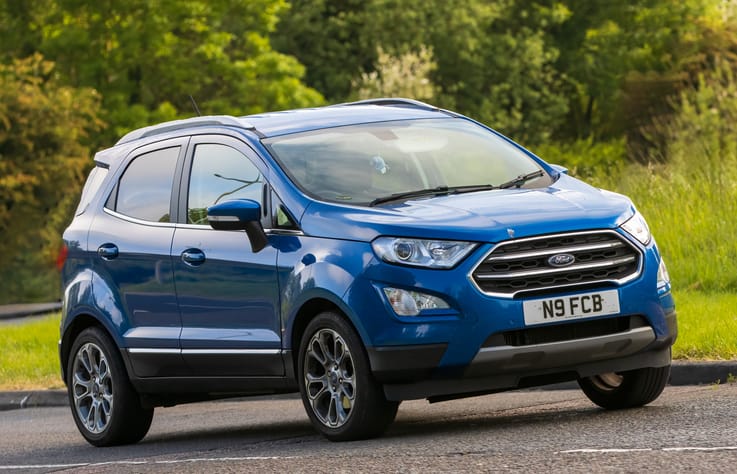Ford EcoSport: A Farewell to the Subcompact SUV

The Ford EcoSport, a subcompact crossover SUV, carved its niche in the market for over two decades. Introduced in 2003, it stood out for its size, offering a blend of maneuverability and utility. However, after a successful run, Ford decided to discontinue the EcoSport in 2023, focusing its efforts on other SUV models.
This article takes a comprehensive look at the Ford EcoSport, exploring its history, features, trims, and the reasons behind its discontinuation.
A Global Journey: The EcoSport's Story
The EcoSport's story began in Brazil, developed and built by Ford Brazil at their Camaçari plant. The first generation (2003-2012) was primarily aimed at the South American market. In 2012, Ford launched a second-generation EcoSport, this time designed for a global audience. This version sported a bolder design and more features, reaching showrooms worldwide, including North America.
The second-generation EcoSport received a refresh in 2018, with an updated exterior and interior refinements. It remained in production until 2023, marking the end of the EcoSport's journey.
Standing Out in the Subcompact Crowd
The EcoSport's subcompact size made it perfect for navigating city streets and tight parking spaces. Yet, it offered surprising cargo capacity, thanks to its versatile folding rear seats. This combination of maneuverability and practicality appealed to a specific set of drivers, particularly those seeking a city-friendly SUV with a touch of adventure.
Here's a closer look at some of the EcoSport's key features:
- Standard All-Wheel Drive (Later Models): A major selling point, especially in regions with unpredictable weather conditions. All-wheel drive provided added traction and control for venturing off the beaten path.
- SYNC® Driver Connect System: A collaboration between Ford and Microsoft, this infotainment system allowed voice commands for navigation, phone calls, and music.
- Safety Features: The EcoSport came equipped with essential safety features like airbags, anti-lock brakes (ABS), electronic stability control (ESC), and traction control.
- Cargo Flexibility: The 60/40 split-folding rear seats provided ample cargo space for groceries, luggage, or outdoor gear. With the seats folded down, the EcoSport offered surprising versatility for its size.
Trims and Options
The EcoSport offered a variety of trims to cater to different needs and budgets. Here's a glimpse into some of the popular trims:
- S: The base trim offered essential features like air conditioning, a four-speaker sound system, and a six-speed automatic transmission.
- SE: Added creature comforts like cruise control, power windows, and alloy wheels.
- SES: Boasted a sportier look with unique wheels and interior accents. It also included features like a sunroof and a premium sound system.
- Titanium: The top-of-the-line trim offered the most features, including leather upholstery, navigation, and advanced safety technology.
Reasons for Discontinuation
Despite its strengths, the EcoSport faced increasing competition in the subcompact SUV segment. Newer models offered more features, better fuel economy, and a more modern design. Additionally, the rise of compact SUVs like the Ford Bronco Sport potentially cannibalized EcoSport sales.
Ford's decision to discontinue the EcoSport reflects a strategic shift towards focusing on more profitable SUV models. The Bronco Sport, with its off-road capability, and the Escape, offering a larger size and more powerful engines, cater to different segments within the SUV market.
The EcoSport's Legacy
The Ford EcoSport carved its niche in the market for over two decades. It offered a unique blend of size, utility, and maneuverability, making it a popular choice for city dwellers and those seeking a compact SUV with a hint of adventure. While its production has ceased, the EcoSport remains a reliable and practical option in the used car market.
